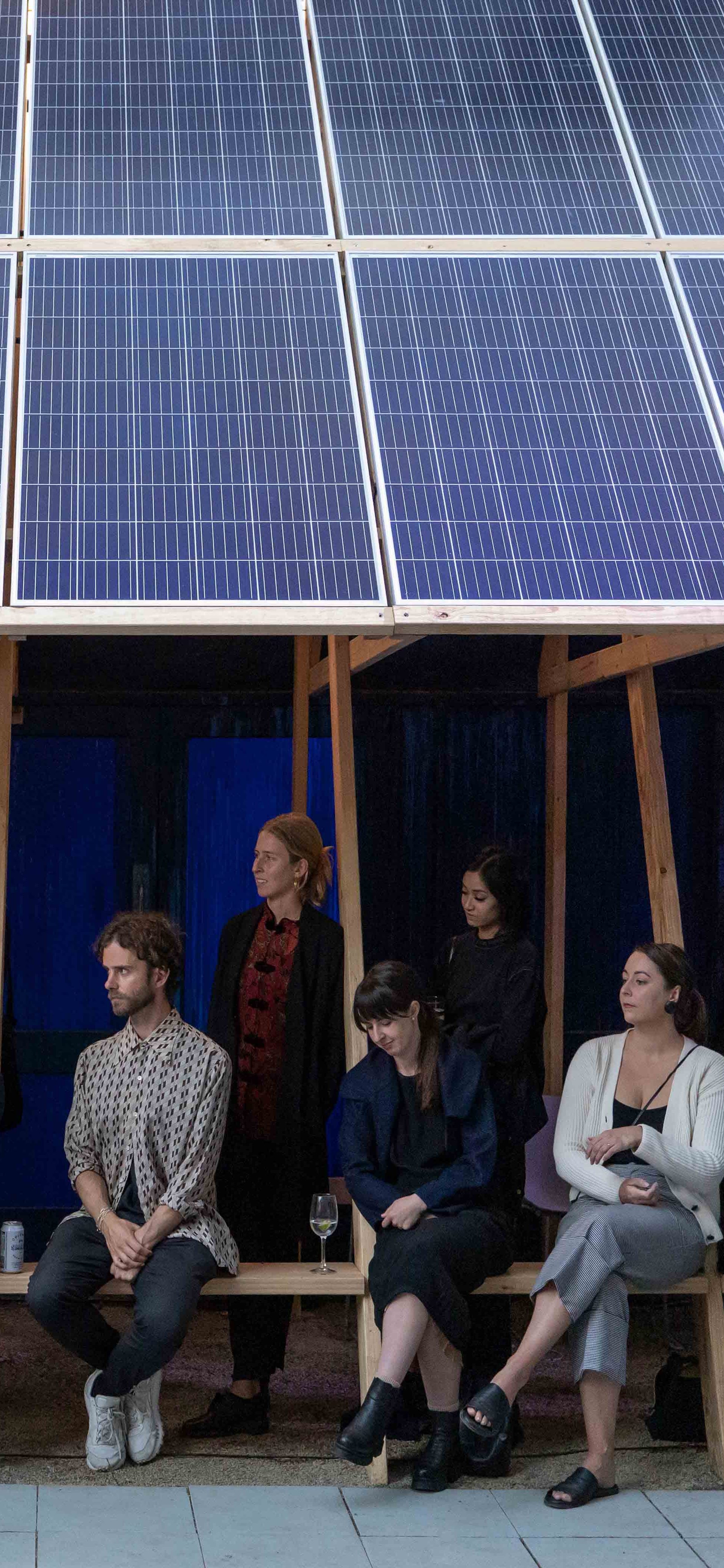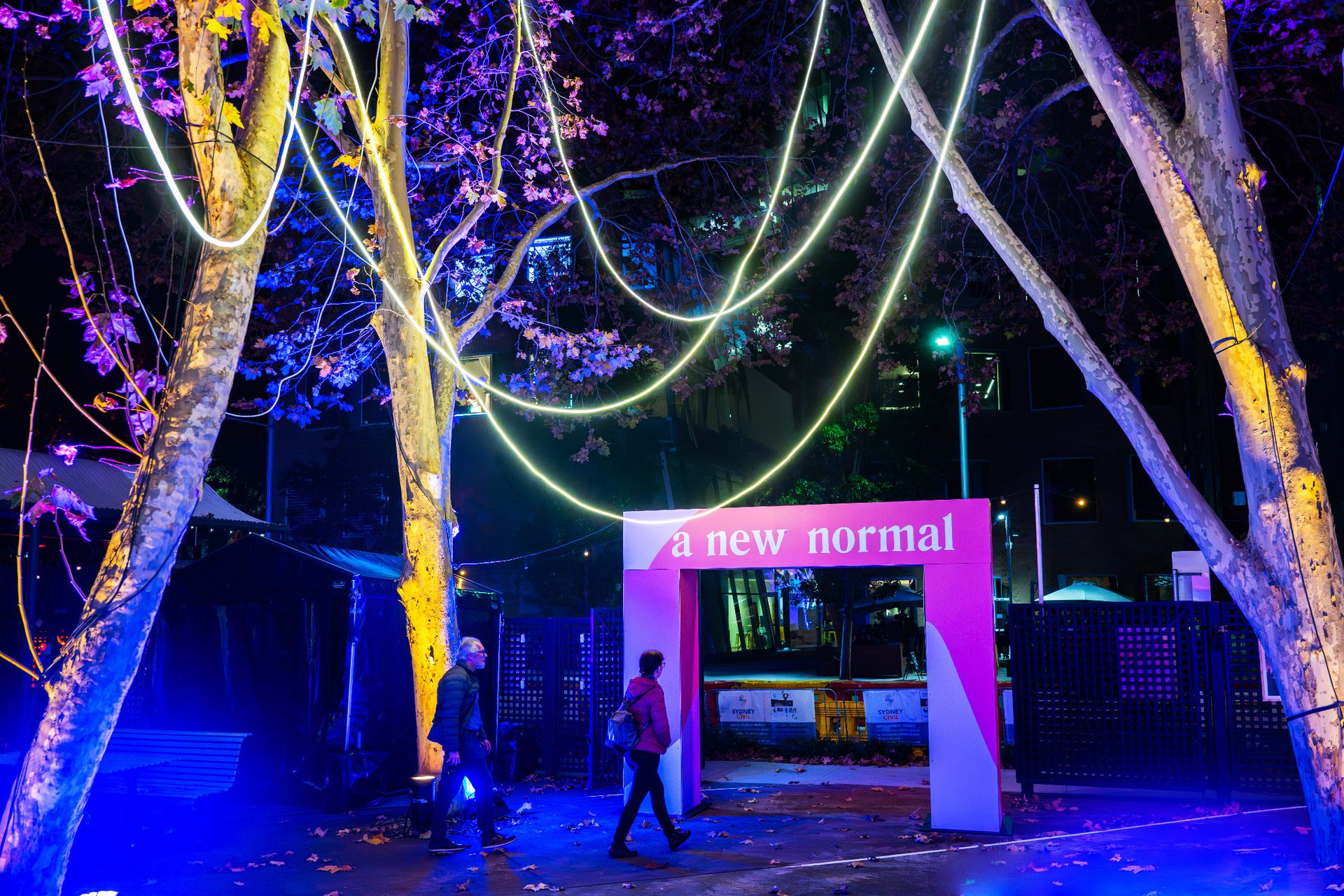A vision for a more sustainable city

Stephen Todd from Powerhouse interviewed Jess Miller, Urban Policy & Communication Strategist, ahead of the installation of A New Normal, a suite of four installations that convert the car park of the Harwood Building – the workshop, archive and administration hub of Powerhouse Ultimo – into prototypes that offer proof of concept to better ways of being of in the city.
Jess Miller admits she’s 'slightly obsessed with cities and how we can make them self-sufficient'. For the duration of the Vivid Sydney festival (24 May–15 June 2024) the former City of Sydney councillor has rallied some 50 organisations to orchestrate A New Normal. 'It’s a place people might have walked past a million times and never really taken much notice of,' says Miller. 'So, it’s great to be able to use this place to offer a smorgasbord of solutions to ever more dire problems.'
Four prototypes to transform Sydney
Stephen Todd Jess, can you give us the elevator pitch for A New Normal?
Jess Miller A New Normal is about identifying the types of projects we need to get going quickly and at scale to transform Sydney from a place that consumes a lot of energy and water and generates lots of waste into a self-sufficient city that creates its own energy, has limitless water and zero waste. It could potentially unlock a $200 billion investment opportunity over 10 years.
ST There are four prototypes: a Solar Pavilion, a Forever Car, a Circular Shop and a Night Garden. Let’s go through each of those, starting with the Solar Pavilion.
JM It’s a simple structure, an open-air pavilion designed by architect Lucy Humphrey, that provides renewable energy from the sun to people who can't, for whatever reason, put solar panels on their roof. It’s a prototype of a bigger idea from Solar Citizens and the local community wanting to put a pavilion down at Wolli Creek on public land, which would give a lot of the people who rent apartments there access to a really nice community space that at the same time gives them lower energy bills.
ST So, the idea is that this becomes a community asset, as much as you might have a community upcycling plant, for instance?
JM Exactly. We've been putting solar panels on the roofs of suburban homes for a couple of decades now but what about people who live in an apartment on the third floor? They should also have the right to pay $2 a week on energy bills like people in the ‘burbs who have solar. So, this is a way of testing that idea and seeing how it can work to reduce the cost of living for everyone.
ST How big will it be and what will it look like?
JM Imagine it as twice as big as a family-size tent. It's a temporary structure, but it brings to life what's possible at low cost and in a low-impact way. It is intended to exemplify how much energy can be created and how that can power all the requirements on site for the duration of Vivid. That will include light displays, LED screens, powering robots – everything that’s needed within the whole A New Normal installation.
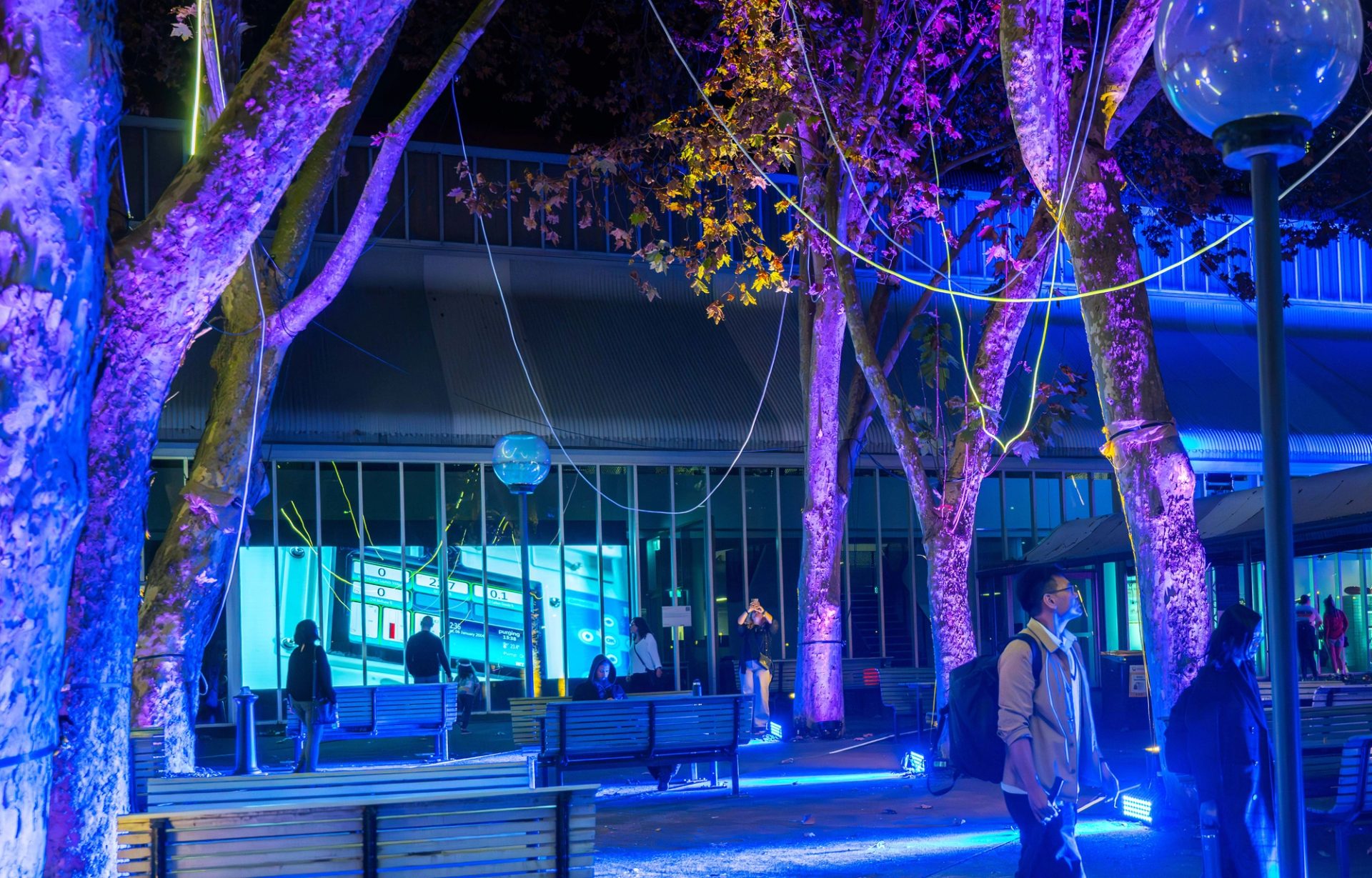
Forever Cars
ST Cars are such a big part of Australian culture – so what’s your Forever Car concept?
JM This is a prototype of an idea to convert petrol-fuelled cars to Electric Vehicles (EVs). The team involved is Neeson Murcutt Neille, the architecture lead inspired by a report undertaken by KPMG into who owns EVs and where, and who would most benefit from low emission transport (spoiler: Western Sydney).
We also worked with Roev, a startup specifically transforming Toyota HiLux cars from internal combustion engines to EVs. The KPMG report suggests that most people who have the money or desire to buy EVs live in the city. However, the people who would most benefit from having an EV are further out in the suburbs. They’re the ones with vehicles that are bigger and less fuel efficient, and who have fewer public transport options and pay more for road tolls and petrol.
Basically, the idea is: we’re in between the time of early adopters and a time when everybody has EVs, so if we could retrofit some of those existing cars like HiLuxes and Camrys which are widespread in the suburbs, we could do that in a way that not only creates clean transportation but also provides additional jobs, helps alleviate cost of living pressures and ensures that a lot of the existing cars aren't just relegated to landfill.
ST It looks like some beautiful vintage cars to electricity powered vehicles.
JM Yes. A local startup called Electrogusto has taken a 1973 classic VW station wagon, a beautiful car, and brought it back to life as an EV. So, it looks old, it feels old, it smells old, but it runs beautifully, like a brand-new car. That will be on display as well as a couple of classic motorbikes that have been given the same treatment, and a couple of dirt bikes. It's about showing what options we have for low-emission transport.
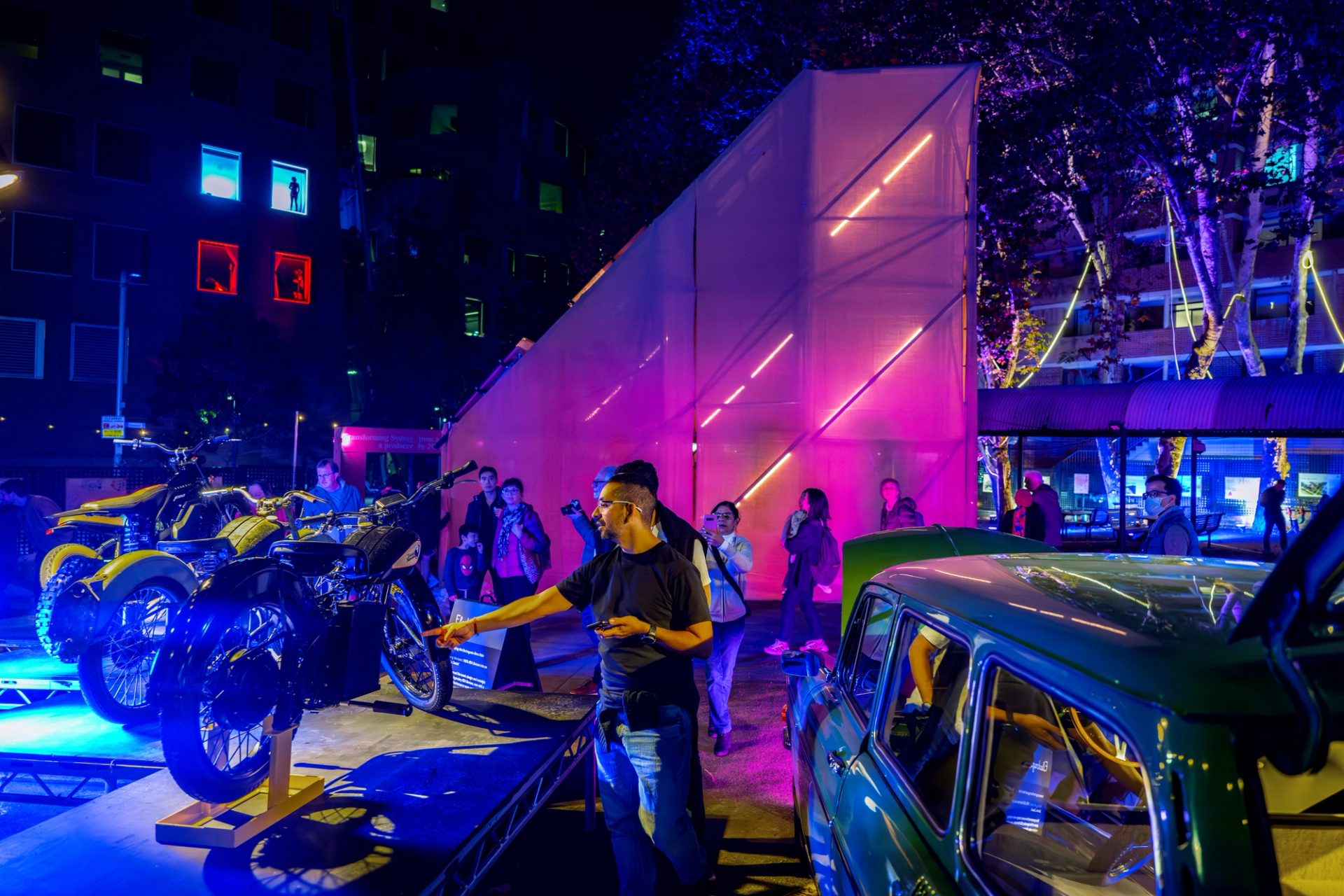
Circular shop
ST Tell us about the Circular shop.
JM This is our response to waste, in particular waste generated through new fit outs within shopping centres. Every time you have a shop changeover, most of the fixtures within that shop – the shelves, the panels, the lighting etc – end up in landfill. So, Second Edition – our favourite lady tradies – have been working in collaboration with Heleana Genaus, the Scentre Group and Mud Australia to understand what kinds of fit outs could be used again and again but have a different aesthetic each time.
They’ve worked with a whole range of builders to identify leftover materials from which they’ve invented modular shelving systems that help alleviate the pressure to make everything new.
Then, we’re working with the team that does advanced algorithmic architecture at UTS. The university has these incredible 3D printing robots that we’ll feed with wire clothes hangers, which they will shred and turn into new objects for sale. So, people will be able to see what a circular process actually looks like and be able to buy those objects through an online interface in the shop.
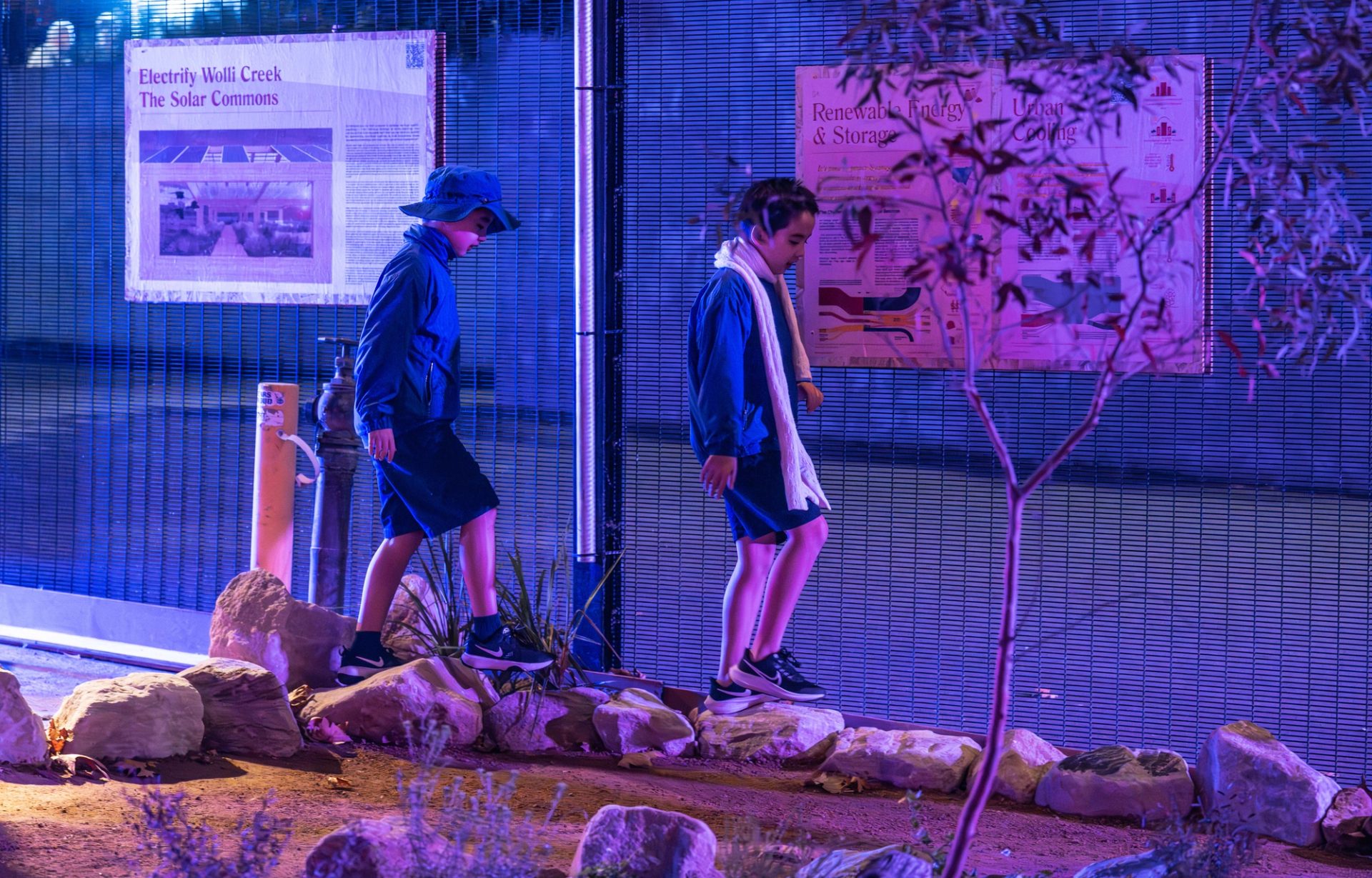
Night Garden
ST A part of the concrete car park is going to be transformed into a Night Garden: what’s that about?
JM This installation asks, what would a 'care' versus 'maintenance' model for our public green space look like, and what can we learn from First Nations custodians? Inspired by teams working on big new concepts for urban agriculture, biodiversity and ameliorating urban heat, we've taken advice from Clarence Slockee of landscape design company, Jiwah, and put Roman Deguchi of Wildflower in charge of transforming the car park into a beautiful Indigenous night garden experience.
Imagine it as a native meadow, with a lot of seating. We anticipate that people will be coming from the Fire Kitchen (along The Goods Line) wanting to just relax with family and friends. There'll be a subtle soundtrack to bring to life what nature in the city could sound like if these ideas were implemented en masse. It’s an opportunity to come and feel what transformation, in this case of a car park, could actually look and feel like.
ST What is your ultimate goal?
JM Our process is to go from a concept, a big idea, then build a prototype of it, and then pilot it – by which I mean take it to a real space. That way, local government, a developer or state government can see how it works. And this, we hope and intend, will lead to broader policy outcomes, and begin to evolve into impact at scale.
It's very much about de-risking new ideas for government by offering an absolute smorgasbord of things that could be done. We de-risk it by taking it to the public and seeing and listening and asking, 'What do you reckon?' If we leave the conversation in the realm of numbers and policy, the boring stuff, people just turn off. But when we're able to attach these important ideas and technologies to culture, everybody feels like they have an invitation to be a part of it, and it makes the creation of a new normal a lot easier, and a lot more fun.
About
A New Normal is a future-prototype hub at the heart of the Vivid Sydney action. Here, all ages are invited to connect with projects that will be built in the near future by some of Sydney’s leading minds in architecture, engineering, design and culture.











